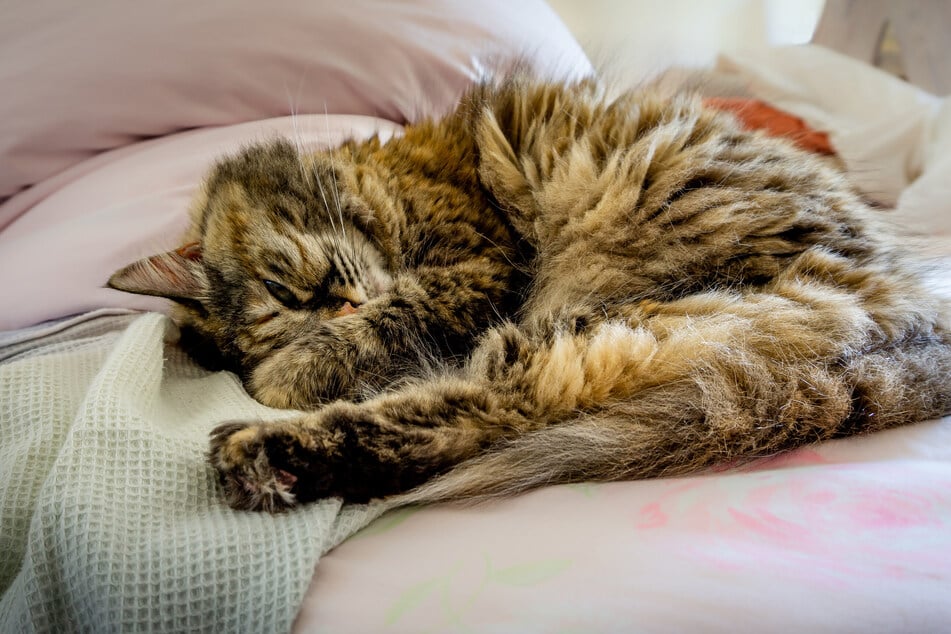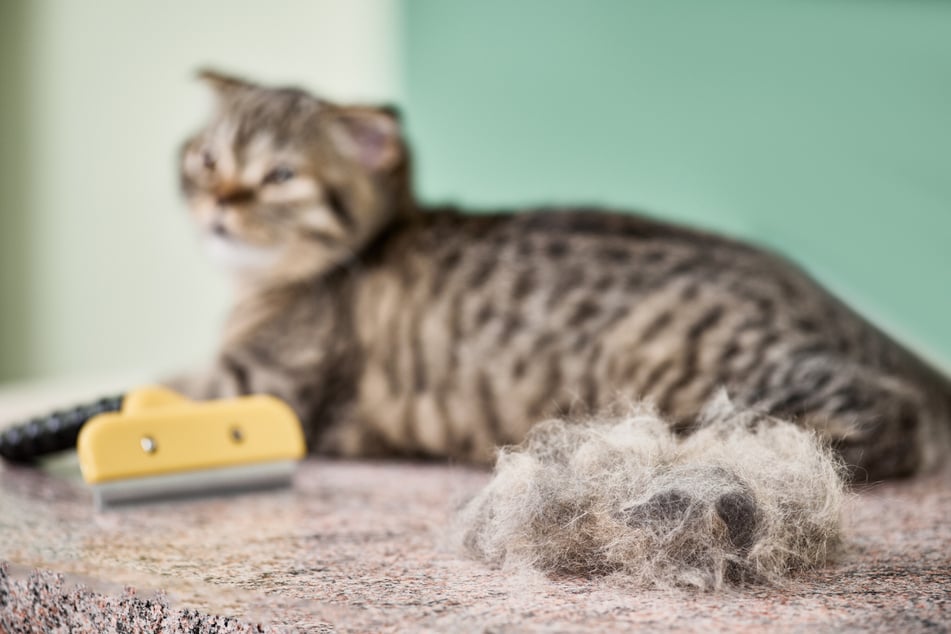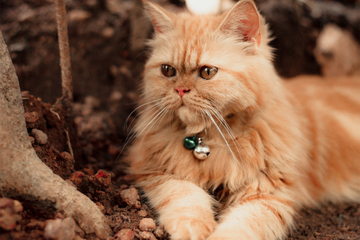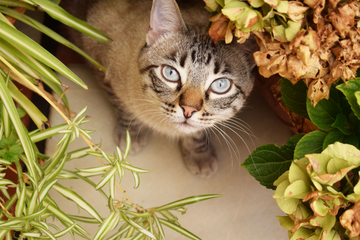Matted cat fur: Causes and treatments
No matter how beautiful your cat's fur may be, if it isn't looked after properly, it can easily become matted and nasty. What can you do about matted cat fur, though, and what causes it?

When it comes to your cat's physical hygiene, few things are more important than the quality of its natural grooming regime. Sadly, though, not every kitty is great at cleaning itself, and this can quickly lead to intense matting that is both uncomfortable and unhygienic. What causes the matting of cat fur, and how can it be resolved?
What causes matted cat fur?
In general, matted cat fur is caused by one or more of the following three causes: Issues with your cat's coat, diseases or illnesses, and age or weight. These three possible causes are all extremely important and linked to various other issues as well. Keep them in mind when looking at your cat's matted fur (and then take it to the vet, of course).
Here are the usual causes of matted cat fur:
- Coat structure: Long-haired cats are particularly prone to matted hair. Kitties like the Maine coon or British longhair tend not to be able to manage their personal hygiene on their own – at least not as well as shorthaired cats. Brushing must be completed multiple times a week to assist them, as well as vet-prescribed cleaning routines.
- Diseases: Some illnesses can cause cats to neglect their personal hygiene and can cause physical symptoms as well. As a result, your cat's coat may get shaggy and lose its shine. Here are the most common illnesses or diseases that can cause matted cat fur:
- Parasite infestation
- Skin diseases
- Nutrient deficiencies (especially minerals and vitamins)
- Inflammation of the sebaceous glands
- Age and obesity: As a cat ages and/or becomes overweight, its flexibility will also deteriorate. This can mean that your caring kitty can no longer reach certain parts of the body. Lumps and tangles can then form more frequently and, if left unattended, will eventually turn into matted fur.
If your cat is showing any signs that its matted fur is due to health-related issues or an inability to clean itself properly, you need to go to a vet.

How to get rid of matted cat fur
We recommend taking your cat to the veterinarian the first time it gets severely matted fur and having it checked out. Figure out the cause and then design a treatment method surrounding the cause, both getting rid of the symptomatic matted fur and treating the reason behind it at the same time.
This should save you a lot of time and hassle in the long run, as well as make your cat's life less stressful, unpleasant, and far more enjoyable. Once you have established these causes and the treatments you need to employ, your vet can take a back seat.
These are the most common ways to treat and get rid of your cat's matted fur:
- Using moisture: When brushing out matted fur, using a damp cloth to soften the knots and tangles can be an absolute dream come true. A de-matting spray can also help to gently remove tangles in cats that are prone to matting due to longer coats. It is important to use natural ingredients, however – ones that your cat won't have an allergic reaction to.
- Getting a special comb: If your cat is already used to being brushed, tangles can be removed with a special matting-specific comb (available at most pet stores). These combs help to get down to the root of the tangles and eliminate them.
- Changing your cat's diet: Dietary changes can quickly help reduce your cat's matting, as it can often be caused by a build-up of oils in the fur. Do this with the consultation of your vet.
- Lots of prevention: Using the preventative measures we have set out, make sure to keep the likelihood of future matting events as low as possible.
If your cat's matted fur has returned particularly bad or has changed in its nature or frequency, it's time to get the vet involved again, as health problems could be in the cards.
Should you shave a cat with matted cat fur?
No, you shouldn't shave a cat that has severely matted fur. Instead, you should take your cat to the veterinarian and get medical advice. In such a situation, it is quite likely that your vet will need to shave the cat – but they will have the skills and equipment required to do so and will therefore do both a better and a safer job of it than you ever could.
Important: As with all of these kinds of things, it's madness to make medical decisions for your cat. You need to take your cat to the veterinarian and go by their advice – not read articles on the internet and think of yourself as an "expert." We are not medical professionals, and neither are you, so go to the vet!

How to prevent matted cat fur
As with anything, it's always better to try and prevent your cat's fur from matting rather than treat the symptoms once it has happened. There are only a few things you can do for your cat, however, as these fluffy little dudes like to clean themselves rather than be cleaned by you.
Here are our tips for preventing matted cat fur:
- Make sure that you brush your cat regularly, at least once a week or multiple times a week for a longer-furred cat.
- Observe your cat's grooming habits. If they are suboptimal, consult your vet on how to fix this.
- Parasites can cause matted cat fur. Keep a close eye out for things like fleas and lice, and act early.
- Injuries can cause matting around a wound. Make sure to keep your cat's wounds clean and get it to a veterinarian immediately.
- Fur-based issues can be caused by dietary problems. As a result, keep your cat's diet healthy and proper and, if necessarily, discuss the issue with your veterinarian.
Matted cat fur is no joking matter. It's highly unhygienic and can cause your cat a lot of distress and discomfort. If it's severe, off to the vet you need to go!
Cover photo: 123RF/Ooriyaron



